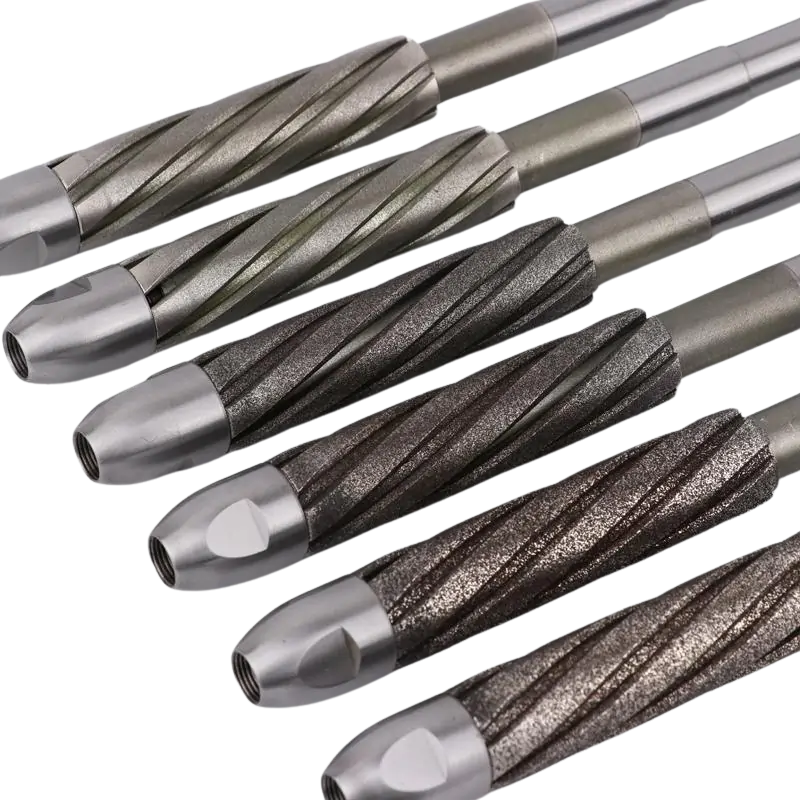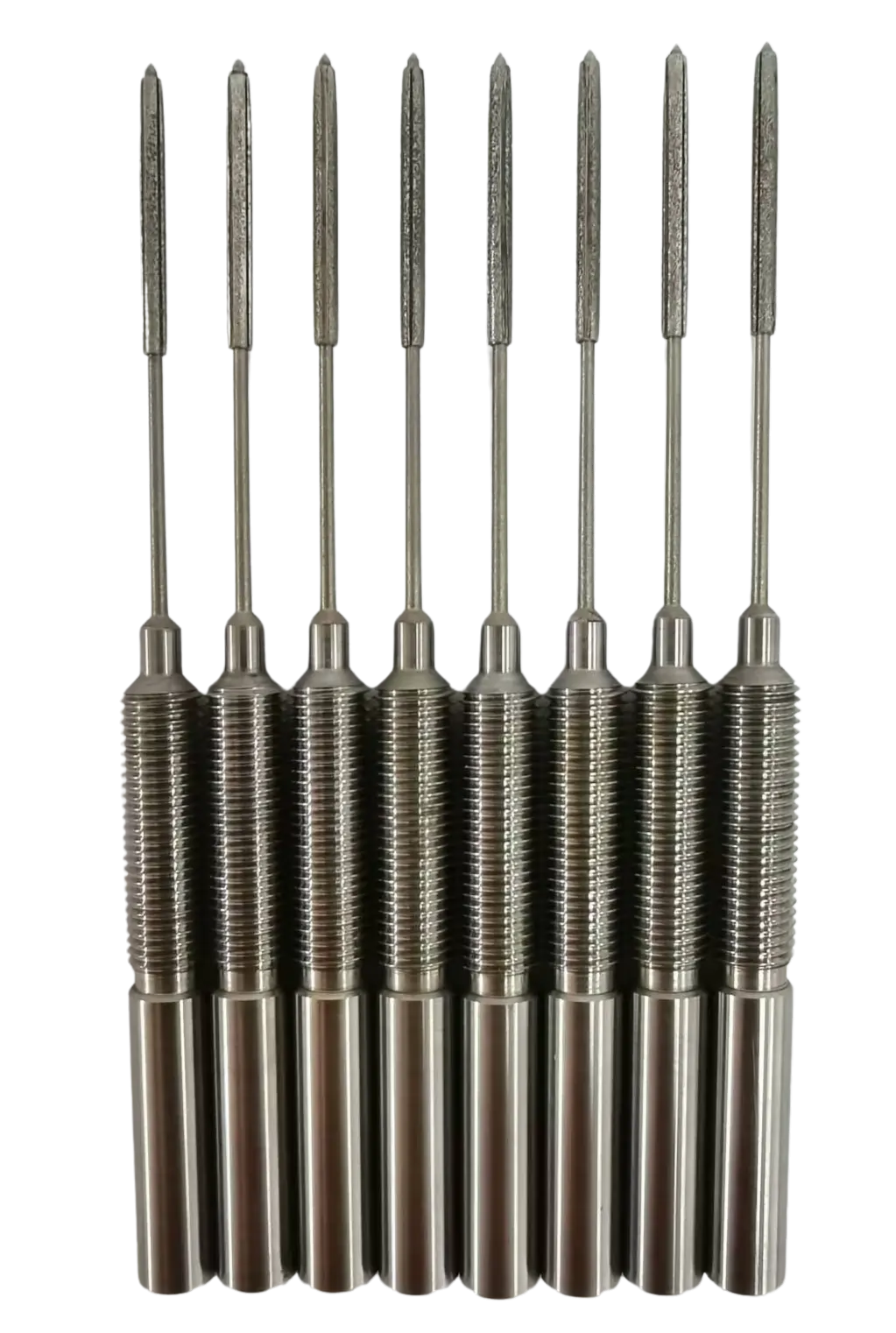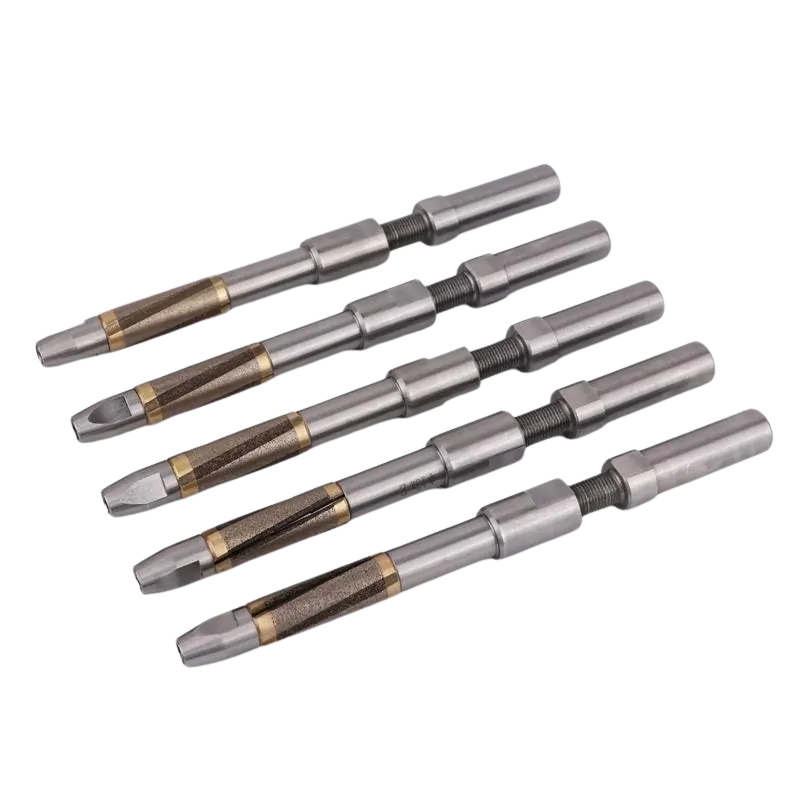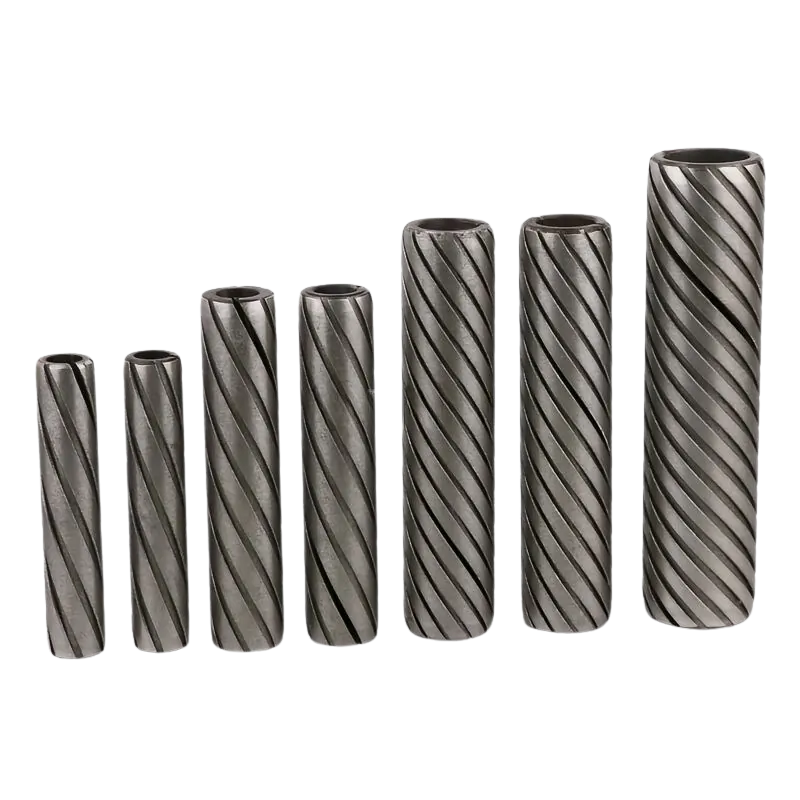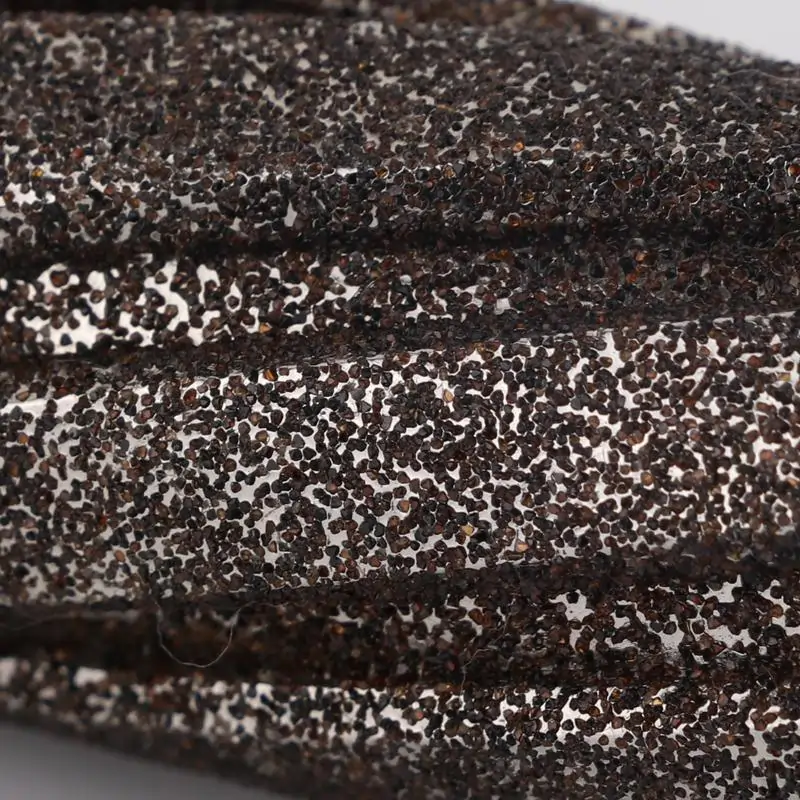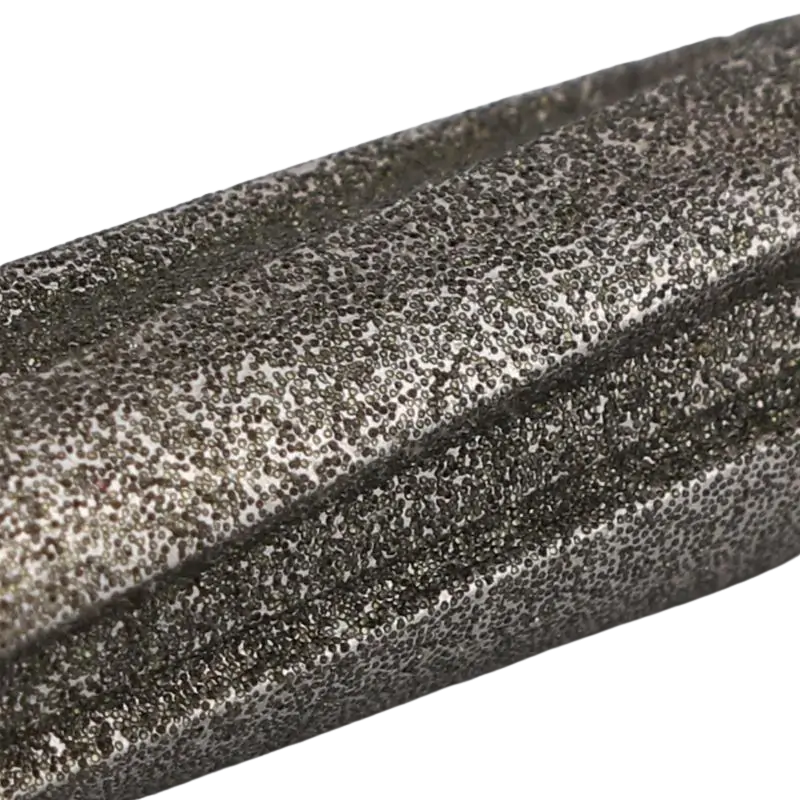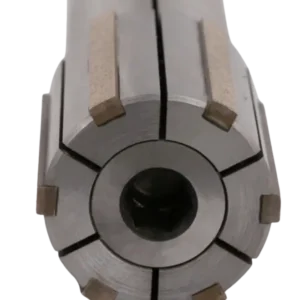Diamond Reamer
Custom diamond reamer services for both diamond and CBN reamers
Expert support tailored to usage and grinding requirements
High-quality, professional-grade electroplated diamond reamers
For high precision hole finishing,roughness can reach Ra0.4-0.2
Description
The production principle of a diamond reamer involves electroplating technology, which utilizes metal binders (such as nickel, cobalt, iron, or copper) to combine small diamond particles evenly and firmly onto a steel substrate. After a certain degree of grinding, the diamond reamer is formed. In the industry, the electroplated diamond reamer is also known as a diamond honing reamer or diamond honing rod. It relies on “grinding” to complete the processing, which is a new technology combining ordinary honing and conventional reaming processes. Typically, its structure includes leading, cutting, calibration, and trailing sections, each with different functions and size requirements.
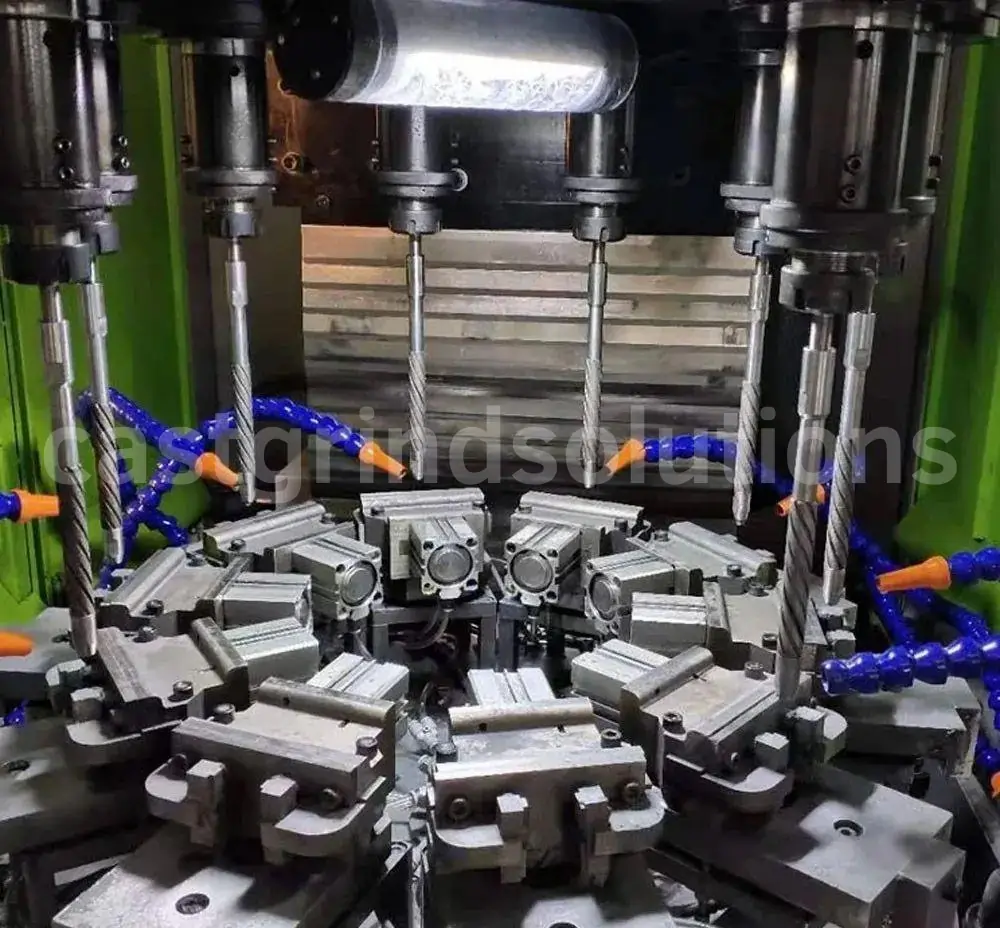
Electroplated Diamond & CBN Reamer (Honing Rod) Applications
Electroplated Diamond & CBN reamers can be used for reaming through-holes, blind holes, and step holes. They offer high precision, strong durability, and a long service life. Currently, diamond tipped reamers are widely used in industries such as connecting rods, hydraulic components, and air-conditioning compressors. The pore size accuracy for reaming connecting rods and hydraulic components is within 0.005mm, with surface roughness controlled at Ra0.2 (steel) and Ra0.4 (cast iron), depending on the specific processing conditions.
Performance Characteristics of Diamond Coated Reamer
High Hardness and Wear Resistance: Diamond plated reamers and electroplated CBN reamers use diamond or CBN particles as cutting edges, featuring ultra-high hardness and wear resistance, making them suitable for processing extremely hard materials such as carbide, ceramics, hardened steel, and high-speed steel.
High Precision: Diamond tipped reamers and CBN coating reamers offer excellent processing precision, capable of achieving micron-level accuracy with a low surface roughness value, making them suitable for applications where strict processing precision and surface finish are required.
High Efficiency and Longevity: Due to their high hardness and wear resistance, diamond and CBN reamers provide high processing efficiency and long service life, reducing tool replacement frequency and downtime, thus enhancing production efficiency.
Stable Performance: Under high load and high-speed conditions, Electroplated diamond & CBN reamers maintain stable processing performance, reduce errors, and improve processing consistency.

Technical Specifications
Diamond Electroplated Reamer Details
Material: Diamond, CBN(cubic boron nitride)
Manufacturing Process: Electroplating Process
Processing Steps: Rough reaming, precision reaming
Processing Materials: Cast iron, nodular iron, hardened steel, and 45 steel (carbon steel)
Application Field: Through-holes, blind holes, step holes
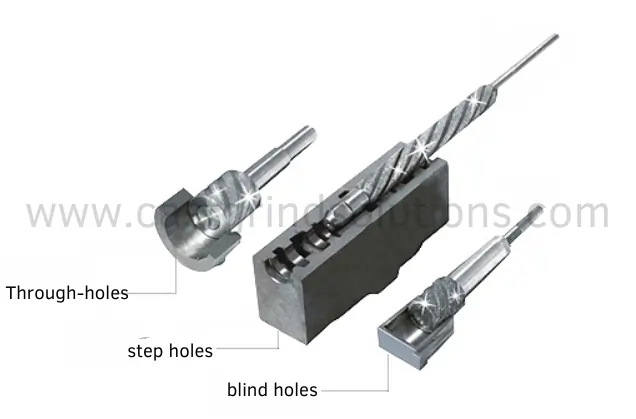
Diamond Reamer Structure:
Fixed Type: Good rigidity, easy to grind, stable hole size, slightly lower tool life.
Adjustable Type: Adjustable processing size, reamer part replaceable , longer life.
Advantages of Adjustable Diamond Reamer:
- Strong coating adhesion, firm diamond binding, uniform diamond particle distribution, high appearance quality.
- The roundness of the reamer’s front and rear guides reaches 0.005mm, with a cylindricity of 0.005mm/100mm, front guide roundness of Ra0.63μm, rear guide roundness of Ra0.16μm, and the coaxiality of the handle and front and rear guides reaches 0.015mm.
- The cylindricity of workpiece reamed holes is less than 0.003, roughness can reach Ra0.4-0.2, with high precision, high efficiency, and long service life.
Customized Service
Cast Grind Solutions offers custom diamond reamer services, whether they are fixed, adjustable, or reamer bars. Our team of experts will provide you with the most professional service and high-quality diamond coated reamers, tailored to your usage and grinding requirements. Customization has always been a hallmark of Cast Grind Solutions’ services.
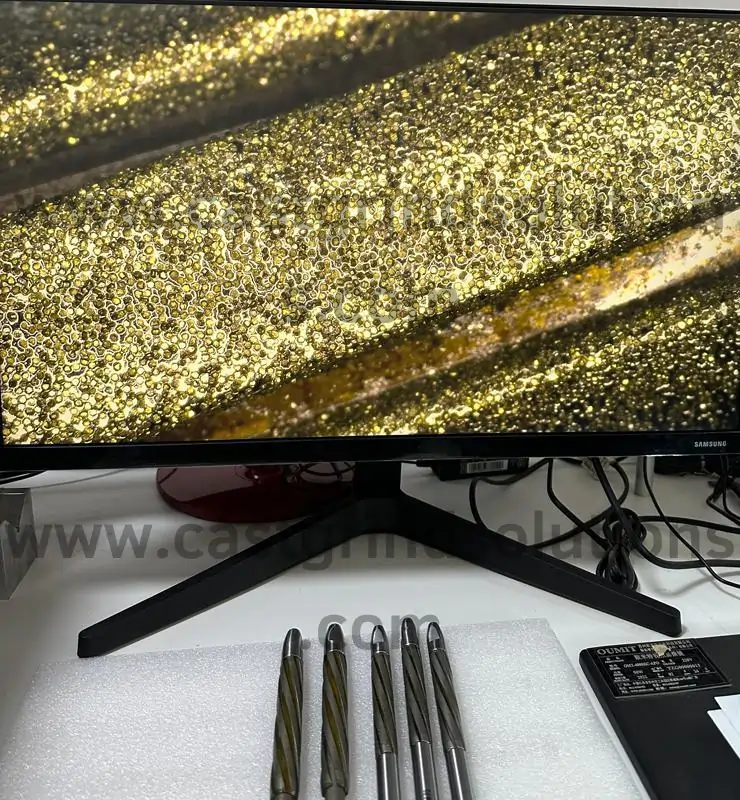
Features
Correct Selection of Electroplated Diamond Reamer:
- Diamond reamers are suitable for reaming black metals like cast iron, nodular iron, hardened steel, and 45 steel.
- In reamer structure selection, there are fixed and adjustable diamond reamers. To extend the life of the reamer, these two structures can be combined. Use an adjustable diamond reamer for rough and semi-fine reaming, and a fixed diamond reamer for fine reaming.
- Choose a reasonable processing allowance. Generally, it should not exceed 1/3–1/4 of the abrasive grain size, otherwise, chip accumulation might lock the reamer in the workpiece hole, reducing tool life.
- Electroplated Diamond reamers with a grain size of 80/100-100/120 should control the processing allowance at 0.02mm-0.04mm.
- Diamond tipped reamers with a grain size of 170/200-230/270 should control the processing allowance at 0.015mm-0.005mm.
- Fine diamond reamers with a grain size of 325/400 should control the processing allowance at 0.005mm-0.01mm.
- Avoid excessive reciprocation in the hole. Generally, one reciprocating stroke is enough. Avoid excessive reciprocation, as it reduces the diamond reamer’s life.
Choose a Reasonable Cutting Fluid:
- For reaming cast iron holes, use 80% kerosene and 20% sulfurized oil or mechanical oil as cutting fluid, or all kerosene.
- For machining steel parts, use 70% kerosene with 30% sulfurized oil.
Reasonable Use to Improve Diamond Reamer Life:
Use new diamond reamers for rough reaming. Typically, after reaming 5000 to 6000 holes, convert them for fine reaming. This utilizes the dull abrasive grains to extrude and polish the workpiece, lowering surface roughness and doubling the reamer life.
Applicable Equipment:
Cast Grind Solutions offers diamond reamers which are suitable for use in machines like MAS, SUNNEN, Nagel, Engis, and other types vertical sequential honing machines, and also applicable in machining centers.

Installation Steps for Adjustable Diamond Reamer
- Initial Setup: Start by mounting the diamond rough reamer onto the power head. Adjust the front and rear adjustment nuts on the adjustable diamond reamer so that 1/3 of the tool extends into the valve hole. Hand-turn the valve body to ensure a suitable feel.
- Operation: Switch on the foot pedal and hold the valve body with both hands, pushing forward evenly. When 2/3 of the tool passes through the valve hole, return the tool.
- Adjustment: During the forward push, if the tool feels increasingly tight and emits a squeaking sound, it indicates excessive reaming. Reduce the size of the adjustable diamond reamer accordingly. Conversely, if the tool feels too loose with no resistance, increase the reamer size until the proper quality is achieved. The operator should feel a certain amount of uniform resistance during the process.
- Consistency: Perform only one complete cycle per reaming session. Multiple passes can affect precision and the consistency of the hole diameter. Once the desired dimension is achieved, and the reamed valve hole passes inspection, proceed to ream the entire batch. Then replace with the intermediate and fine reamers, following the same adjustment methodology as the rough reamer.
- Bulk Handling: If working with smaller batches, using just two reamers (rough and fine) may be sufficient. In this case, use the rough reamer twice: first for rough reaming and then for intermediate or fine reaming after adjusting the size.
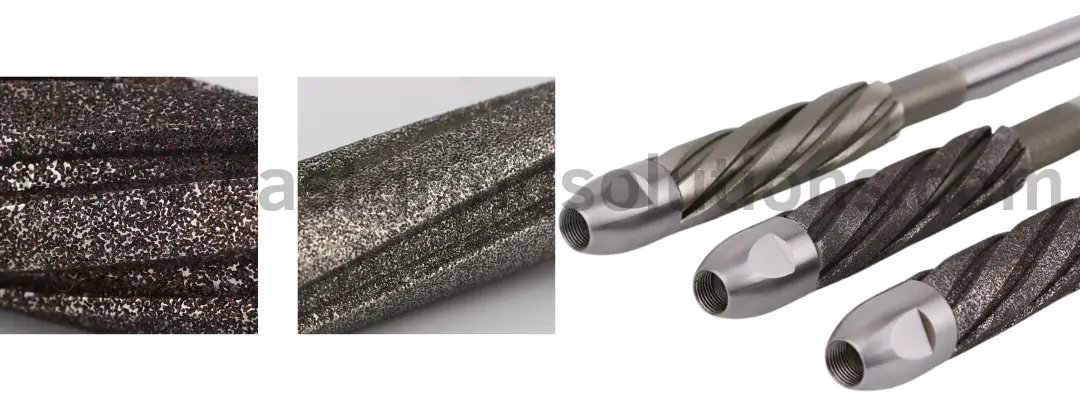
Application
Thanks to their excellent performance characteristics, electroplated diamond reamers are widely used in various precision machining scenarios, such as:
Precision Mechanical Parts Manufacturing: For processing high-precision and high-surface-finish parts like bearings, gears, and pistons.
Aerospace Components: For machining turbine blades, jet engine parts, and aircraft structural components requiring high processing precision and durability.
Medical Device Manufacturing: For producing high-precision components like artificial joints, surgical tools, and dental implants.
Optical Component Processing: Suitable for manufacturing optical lenses, and other optical elements requiring high surface finish and precision.
Electronics Industry: For machining high-precision electronic components and printed circuit boards.
Jewelry and Watchmaking: For crafting high-precision jewelry and watch components.
Mold Making: For processing high-precision cavities and mold parts, especially for difficult-to-machine materials.

